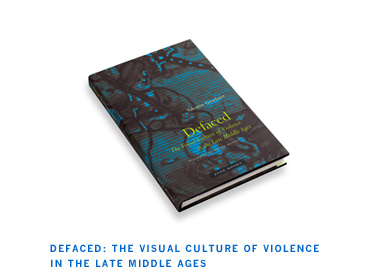 |
 
|
 |
 |
 |
|||||||||||||||
 |

|
||||||||||||||||||
| |
From the fourteenth century on, the artifacts of Western visual culture became increasingly violent. Destroyed faces, dissolved human shapes, devilish doppelgängers of the sacred: violence made real people nameless exemplars of formless, hideous horror. In Defaced, the historian Valentin Groebner provides a highly sophisticated historical, cultural, and political model for understanding how late-medieval images and narratives of “indescribable” violence functioned. Early-modern images formed part of a complex, often contested, system of visualizing extreme violence, as Groebner reveals in a series of political, military, religious, sexual, and theatrical microhistories. Intended to convey the anguish of real pain and terror to spectators, violent visual representations made people see disfigured faces as mirrors of sexual deviance, invisible enemies as barbarian fiends, and soldiers as bloodthirsty conspirators wreaking havoc on nocturnal streets. Yet not every spectator saw the same thing when viewing these terrifying images. Whom did one see when looking at an image of violence? What effect did such images have on spectators? How could one distinguish illegitimate violence that threatened and reversed the social order from the proper, “just,” and sanctioned use of force? Addressing these issues, Groebner not only calls into question contemporary habits of thinking about early-modern visual culture; he also pushes his readers to rethink how they look at images of brutality in a world of increasing violence. “Groebner’s is a major new voice in German history writing today. Mixing visual, literary, and archival sources, he paints a mesmerizing portrait of physical disfiguration in early-modern Europe. . . . This book should be required reading for historians of art and literature of the period.” Not for sale in Germany.
Also by this author:
|
||||||||||||||||||
| |
|||||||||||||||||||
| |
|
|
|
|
|
|
|
||||||||||||